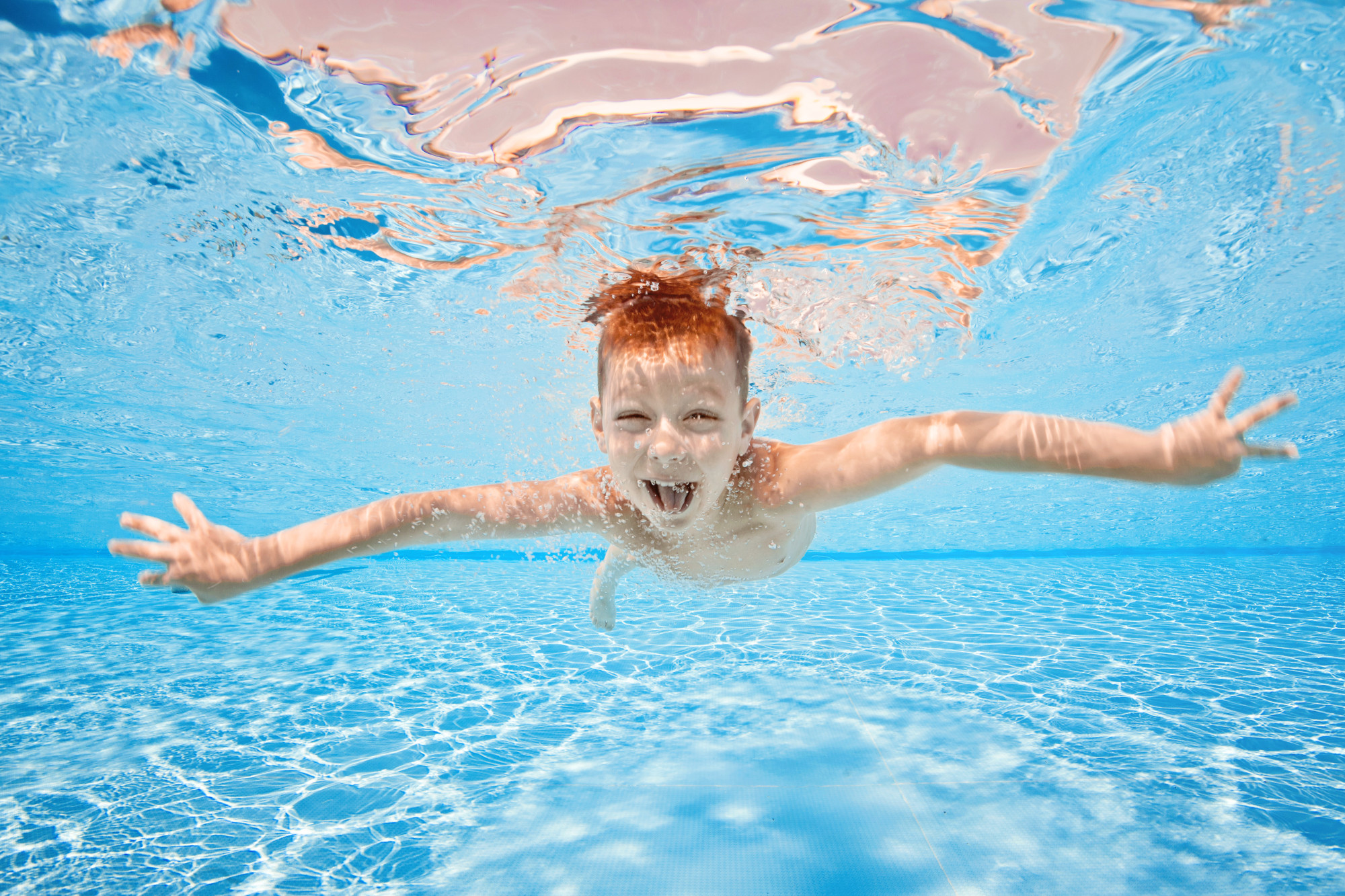Picture two inches of water. It may be barely enough to fill a disposable paper cup, but it’s enough water for a child to drown in.
Now imagine a swimming pool.
If you plan to take your children swimming this summer, you can understand why brushing up on pool safety for kids should be your priority. Drowning is the leading cause of death for children between the ages of one and four, but your vigilance and awareness could save a life.
We’ve collected the essential water safety tips to keep in mind to prevent pool accidents and water deaths caused by accidental drowning. Read on to learn everything you need to know to enjoy a safe and active summer.
Tip: Swim Lessons at Any Age
A child’s first home is the water in their mother’s womb. Today, more professionals are offering swim lessons for children as young as four months old. Tiny babies become capable of flipping onto their backs when they find themselves face-down in the water, potentially developing the reflexes to save their own lives.
It isn’t too late if you didn’t start your child in lessons that early. Consider swimming lessons as an essential medical care expense. Children who can swim gain lifelong agency over their safety.
During the pandemic, mobile swimming lessons became more commonplace. A swim instructor will come to your home and teach your children in your swimming pool. Aquatic safety has never been more efficient.
Tip: Remove Temptation
If you sat your toddler down and told them, “don’t press the red button,” what would they immediately do? Many pool accidents occur because, despite an adult telling children to stay away, something kid-friendly near the water proves tempting.
First, ensure you do not leave toys near your swimming pool. Even something innocuous can lure a small child close to the edge.
If using a small wading pool, always empty it of water when your child has finished playing. If water remains, they may try to sneak in for some extra playtime and slip.
Tip: Take a Tour
Another key to safety is prevention. When visiting a new pool for the first time, bring the kids along for a short guided tour.
Narrate all the pool’s features as you go. Point out where the ground is hard and slippery and how easily they could get hurt if they run. Show them the shallow end and the markers indicating any shifts in depth.
You can also introduce the kids to any lifeguards on duty who may have additional tips.
Tip: Choose a Designated Adult
Most public pools and beaches will have a lifeguard on duty. Even so, those individuals have a lot on their plates. It’s their job to keep every swimmer safe, and they only have one set of eyes.
Anytime kids are swimming or engaging in water play, an adult should keep an eye on them. This individual needs to have a phone nearby for emergencies, but they should not be looking at it while “on duty.” Ideally, they will keep their eyes on the children at all times so they can work with any lifeguards or staff members to keep kids safe.
Tip: Learn What Drowning Looks Like
Most people have never seen someone drown. While this is a good thing, it does make it harder to spot drowning in action. Many adults don’t realize how quiet, calm, and uneventful an aquatic emergency can be.
When a child is drowning, their lungs often fill with water, so they can’t scream or call for help. If they are underwater and oxygen deprived, they may feel disoriented and unsure of where the surface is. The larger the body of water, the more challenging it is to spot a distressed child.
Every adult can benefit from taking a water safety class. Your instructor can provide media and demonstrations to show you what to look for.
Tip: Don’t Rely on Inflatables
The first thing many parents do when planning to take their kids for a swim is stock up on safety inflatables. Unfortunately, all the “water wings” in the world can’t prevent accidental drowning. All inflatables are pool toys, and most come with warnings that they are not suitable safety devices.
The only commercial materials you should use as safety devices include “Coast Guard Approval” somewhere on the packaging (or the flotation device itself). Even with Coast Guard-approved swim gear, an adult should supervise swimming children at all times.
Tip: Make a Plan
Even if you follow all the tips above, accidents happen, and they’re often out of our control. While prevention is a huge component of keeping kids safe, efficient action is just as essential. You need to make a plan for what to do in an emergency.
Where is the nearest phone? The closest first aid kit? Is there someone nearby who has training in child CPR?
We hope you will not need to use your plan, but having one in place will offer peace of mind.
Prioritizing Pool Safety for Kids
Swimming can cool kids down, keep them active, and inspire hours of social summer fun. Any activity worth doing is worth doing safely, and you owe it to your children to put their well-being first. When you keep pool safety for kids at the forefront of your mind, you’re doing your part to ensure your whole family has a fantastic summer.
A single tip can save a life—and there are many more where these came from! Visit the rest of the blog for more lifestyle suggestions that can transform the way you see your world.
Read more articles for ibomma

